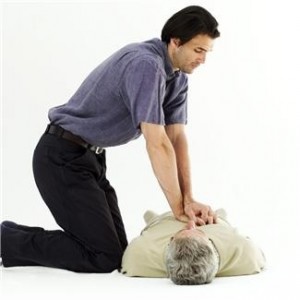
Going to emergency procedure training seminars should always rank high on everybody’s list of priorities. Having proper knowledge on how to correctly perform and administer CPR (Cardiopulmonary Resuscitation) during emergency situations is an extremely crucial skill to have. While there is no telling when you will actually get the chance to use it, it can certainly come in handy in a number of different emergency situations. There are many CPR and First Aid training locations that you can find around Canada and you should enroll and have the latest procedure on how to conduct CPR.
Everyone should keep in mind that we are living in an increasingly unpredictable environment. This is the reason why emergency preparedness is so important. Our readiness influences our reactions to certain situations. The way we respond in emergency situations is what ultimately decides their final outcome.
While it is a widely practiced emergency medical procedure, one would be surprised that CPR is a fairly new invention.
[note color=”#3b9299″]History of the CPR Procedure[/note]
Originally invented during the 1960’s, it was designed for reviving sudden cardiac arrest victims. It essentially does two things. First, it ensures that oxygenated blood is consistently flowing so that oxygen is delivered to the brain and other vital organs. Second, the procedure aims to get the victim to start breathing again.
Before the invention of CPR, victims of sudden cardiac arrest had no other alternative but death. This is because there were still no means to help them. Nowadays, it is common practice to administer CPR in emergency situations. Since its invention, the CPR procedure has completely changed the medical field forever. Doctors, medical professionals, and emergency response workers now have a way to help patients in ways previously thought impossible thanks to CPR.
[note color=”#3b9299″]Updating the CPR Procedure[/note]
Since its initial invention, the CPR procedure has seen its fair share of alterations. All of the changes introduced over the years were done with the goal of making CPR a more efficient emergency procedure. For instance, the American Heart Association recommended some minor, albeit crucial, changes to CPR in 2010.
Before these changes were made, it was part of the CPR procedure to check the victim’s pulse before proceeding to the other steps. However, this is no longer the case as of late. It has been deemed as an unnecessary part of the procedure. In fact, experts now recommend that you skip this part altogether especially if you have no formal medical training to speak of. The AHA has finally recognized that looking for the victim’s pulse can prove to be a cumbersome task for those who have no prior experience doing. In fact, it has been effective only in terms of eating up the crucial seconds that could have been used to help resuscitate the fallen victim.
Aside from this, the whole CPR procedure remains more or less intact. Its main goal remains the same: facilitating blood flow to the victim’s body. In fact, due to the changes made, the entire procedure has become even more effective.
Professional CPR & AED Training Manikins: Meet new CPR Guidelines
[media url=”http://www.youtube.com/watch?v=zNrWHCQ0pzw” width=”600″ height=”400″]Receiving CPR training is the best thing you can do to prepare for any type of emergency. It is also important to keep updated regarding the various changes made to the procedure. Doing so will ensure that you are able to do the best job possible. You can learn all about these and more by attending CPR Classes. Try First Aid Training and CPR Courses at Ottawa and surely they have the latest information for you.
